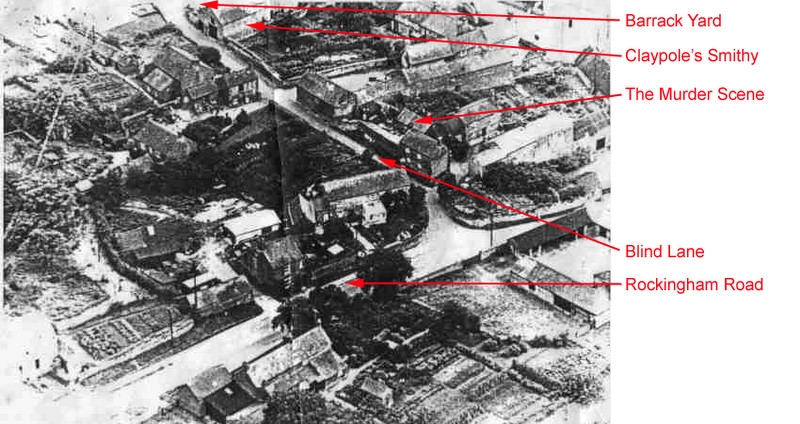|
In the Middle Ages, following afternoon service on Christmas day, apples were thrown down to the
village children, originally from the belfry of the church, but later from
outside The Rectory. When
there was a death in the village, the church bells were rung three times for a
man, and twice for a woman, to let the villagers know that someone had passed
away.
Bury
House is believed to be haunted by the ghost of a female servant who was pushed
from an upstairs window by the butler. Since then, her uniformed shadow has
haunted the area, looking for justice. She has also been sighted in Bury Close
and the Hunting Lodge. Source
www.paranormaldatabase.com
There
have also been reports of a 'shuck' sighted in the old Corby Road area. A
shuck is a fire-eyed spirit in the shape of a large black dog, about the size of
a calf. The shuck is also known as Padfoot, Shriker and Barguest in different
areas of the country. Cottingham's shuck was regarded as the travellers' friend,
walking in silence alongside lone travellers. A padfoot actually makes an
appearance in 'Harry Potter and the Goblet of Fire'! Source
www.paranormaldatabase.com
and Paw of the Padfoot
Murder
in Cottingham, 1875
A tragic
murder took place in Blind Lane on 1 May 1875. A six year old boy, Thomas
Christopher Claypole, was murdered by a neighbour, Henry Crane, who was then
living in a hovel next to the Claypoles' cottage, all in Blind Lane. Crane, who
had long had a reputation as a 'queer' character, had sent Thomas out to buy
some 'suckers' (sweets), which Thomas duly purchased from
Chamberlain's shop in
Church Street. Shortly after he returned with the sweets, Thomas was playing
outside and his mother Sarah heard Crane say 'come you along'. She then heard
the sound of her son's feet being drawn along the ground and, on running out and
opening the door to Crane's house, found her son standing in the room with his
throat cut. Sarah carried her boy outside where he died on the ground about three minutes later.

An inquest
was held at the Spread Eagle public house where the jury returned a verdict of 'wilful
murder against the man, Henry Crane'. Crane was subsequently formally charged
with the murder and taken to Northampton County Gaol. However, he never stood
trial as, in July that year, he was removed to a Criminal Lunatic Asylum at
Broadmoor by order of the Secretary of State where he died on March 21, 1885.
There is
some speculation that the murder was a revenge killing for the death of Crane's
brother in law, Thomas Sculthorpe, who he alleged had had his beer drugged and
subsequently burned to death by falling into an open fire. However, there is no
evidence to corroborate this.
For more
information on the murder, visit Alan Craxford's website at
www.craxford-family.co.uk
|